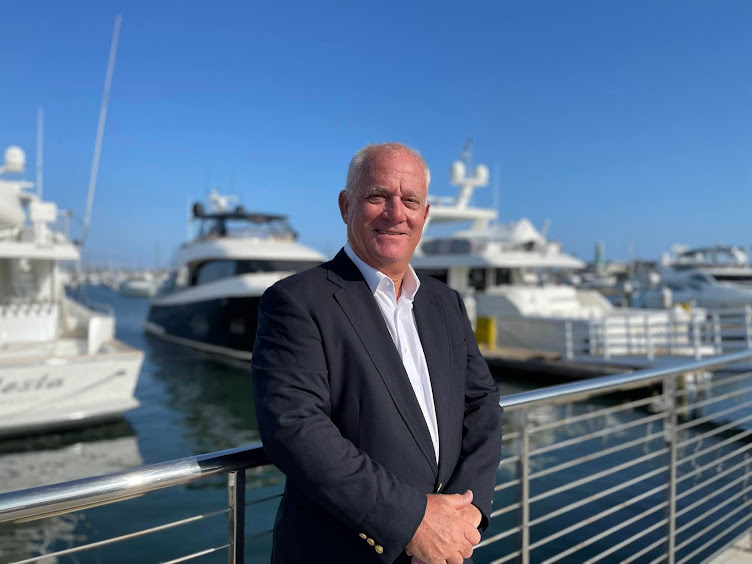By the time you are reading this, I will be aboard the Santa Cruz 50 Horizon approaching Catalina Islands west end, next stop Honolulu, Hawaii. The Race is called Trans Pac which dates back to 1906 the history book is full of information with the last updated version being completed in 1981. I am thinking I should join a Trans Pac history committee to update the history book when I retire from offshore sailing. The next questions are when does one retire and what keeps us coming back?
Years ago a revered navigator Tom Leweck, the Curmudgeon, wrote a story in an electronic sailing newsletter named Scuttlebutt called Trans Pac Anonymous (TPA) a non-profit organization designed to protect yachtsman from unscrupulous boat owners who make promises of champagne sailing voyages to Hawaii on the sparkly blue water of the Pacific Ocean. It’s been years since I have read the story with the bottom line being deferred to what my father always told me “You don’t get something for nothing”.
From my perspective, I could be wrong about this, the curmudgeon had reached a point in his life where he still wanted to compete yet the pounding of the first two or four days of the race, pending on what size boat you are on, is absolutely miserable. This is the point I feel the curmudgeon was disclosing to the crew of the competing boats. Let me set the scene for you: The start of the race is normally under the light breeze from the Catalina eddy. Once the boats are about forty miles off the coast of California they enter the offshore breeze which can easily be in the 30-knot range. This is quite often when the carnage takes place with several boats breaking down and return to port with their tail between their legs. This happened to me in 2003, and normally starts at about three in the morning your first night out. The crew struggles with the reduction of sail area with all hands on deck. With this task completed the off watch heads back down below wet and cold trying to get some sleep within the hour and a half before their watch starts. At this point picture yourself a little seasick living inside a drum on the drumline at the halftime show of a football game.
This goes on for four days with your body locking down asking you why do you do this to yourself? The crew has to learn quickly how to adapt, which includes going to the head while on a twenty-degree angle, taking on and off our foul weather gear, learning how to make coffee with one hand for the boat. Can you picture me now after struggling to stay upright after pretending to get some sleep, putting on my gear now trying to remember how to balance my coffee mug as I pour warm water into it? I learned years ago that boiling water is very hot and your first drink of coffee is a type of tsunami effect out of your canteen into your wide-open mouth. Still on a 20-degree angle mountain climbing expedition, one looks for the easiest route up the companionway ladder onto the weather rail. Just then you get hit in the face by a large cold wave with the water dripping down your slightly exposed jacket. One quickly begins the count down to one’s off watch. Just at about this time, I start getting upset because I have to get back up and start figuring out how to make the boat sail faster by trimming the sails. Which is the start of another climbing expedition traveling down to the leeward side and back up again. I’m not going to lie, I do a lot of finger pointing while asking the younger crew members to complete the trimming while I never have gone to the bow of the boat since the turn of the century.
Day two and three are the same balancing act, one has to see me trying to take the casserole out of the oven placing it on the stovetop peeling back the aluminum foil, and sticking my finger in the middle of it to see if the casserole is ready for dinner. If it is not ready, the juggling act starts over. The first few days go by with most of the crew laughing at how the old guy tries to stay on his two feet dancing around the galley while cursing at himself.
As we go into day four this is when one receives the pleasure of living through four days of hell. The angle of the boat is less than five degrees, the crew has set one of the reaching spinnakers while the miles are clicking away towards the cold Mai Tai’s, yes I talking in the first person plural form. Morale on the boat can be severely damaged should the wrong route be taken in the early part of the race, there a no passing lanes after day five. Now, if you are one of the fortunate ones whose team has made the correct choices then you are in the race of your lifetime.
I would think more than half of my readers remember the original Batman TV series? The first show would show you how Batman and Robbin got into trouble with the second episode showing how they got out of trouble. For the rest of the story remember “Same Bat-time same Bat-channel”. While I recall why I do this to myself, you can follow us at https://yb.tl/transpac2021 wish us luck!
Sea Ya







